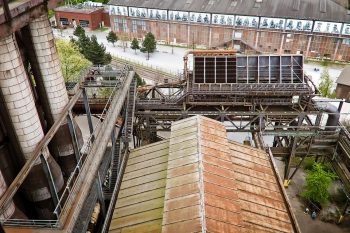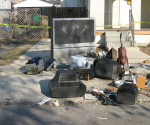How Cities Are Tackling Aging Infrastructure Problems
Infrastructure in the United States is well past its prime in many cities. Some cities have sewers that were put in place in the late 1800s. Some even used terracotta piping that hasn’t been in use in decades.
The United States’ infrastructure is falling apart, and the latest Infrastructure Report Card in 2017 rated the country’s infrastructure a “D+.” The grade was the same in 2013, meaning no progress has been made to significantly stop the aging infrastructure from becoming a hazard in the foreseeable future.
It’s estimated that the U.S. will need to spend $4.5 trillion by 2025, just seven years from now, to help improve schools, dams, roads, airports, sewer lines and more.
Shreveport has found creative solutions to the city’s growing sewer issues that saves the city money in the process. The city has partnered with a company out of Boston to help them approach their sewer infrastructure work in a new, innovative way.
Utilizing sewer camera inspection, the city first identifies issues before tackling repairs blindly.
The city then uses what’s called “trenchless technology” to help remedy the city’s old piping. The technology is different from a normal replacement, which requires the city to remove the old piping, dig up the road and then replace and repave the area.
The old process leads to business and tourism loss in many cities.
Trenchless technology does the opposite. The technology places a liner inside of the older pipes, which then cures in place. The lining acts as a new pipe while keeping all of the old piping in place and avoiding ripping up roads in the process.
Shreveport, like many cities in Florida, has sewer systems that are 50 years old or older. These systems are prone to failure, causing flooding and serious damage, especially in winter if temperatures are subfreezing.
Sanitary overflows caused the city to sign a decree with the Department of Justice and Environmental Protection Agency. The city is facing $500 million in repairs that must be made by 2026. Cured in place piping is being used to meet deadlines and save the city money, too.
The city, like many across the United States, is lacking the funds to be able to move forward with infrastructure improvements. A band-aid approach is being taken, which means that many of the cities are fixing issues as they occur.
Preventative maintenance is also a key approach to deal with aging infrastructure, as many cities are finding it much less expensive to take a preventative approach rather than a last-minute approach. In Shreveport, preventative measures on a 12-inch sewer main costs $15,000 versus the $96,000 bill to replace the main.
Bridges in the country are estimated to cost $123 billion to repair with over 200,000 of the 614,000 bridges in the country older than 50 years old. Reports have 15,500 dams in a high-hazard state, drinking water in critical condition and over one million pipes in the country being 100 years old or older.
The United States loses 2 trillion gallons of drinking water, that has been treated annually due to water main breaks.
Author: Jacob Maslow















